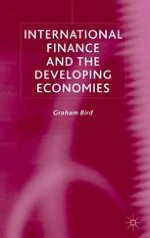2004 | Buch
Über dieses Buch
There are many challenges facing the economies of developing countries. Capital volatility, financial crises, aid, debt and the IMF are all issues that have received a great deal of attention over recent years. In International Finance and The Developing Economies , Graham Bird provides an essentially non-technical discussion of these issues, examining the underlying political economy and discussing the policy alternatives that are available.
Anzeige
